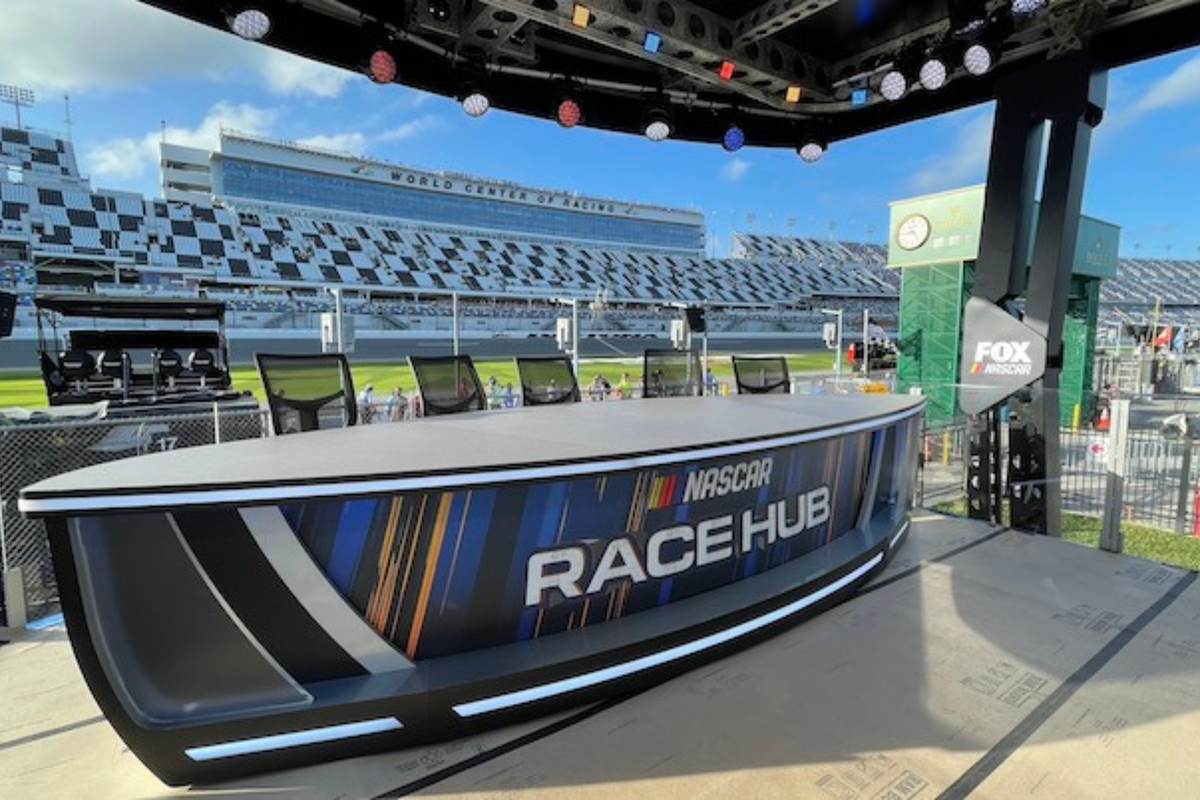
Imago
via Imago

Imago
via Imago
The rumble of an engine has always been NASCAR’s signature, but today, a different, more ominous sound echoes in the garages: the silence of diminishing ratings. The most-viewed NASCAR races historically were concentrated in an era defined by free, over-the-air television. For instance, the infamous 1979 Daytona 500 was the first to be broadcast live. By 2008’s Daytona 500, the viewership saw exponential growth. But the same can’t be said for the 2025 NASCAR $7.7 billion media rights deal.
Watch What’s Trending Now!
Denny Hamlin echoed the issue, “Just not good…We obviously lost a significant amount of network races in this TV deal… we’ve always just taken the most amount of money. It’s not been about what’s going to put us on in most households.” Hamlin also highlighted the consequences, pointing to Pocono’s 1.87 million viewers (down 22%) on Amazon Prime and New Hampshire’s 1.29 million (down 31%), blaming NASCAR’s Fox/NBC deal for prioritizing cash over fans.
This weekend’s playoff race at the legendary Talladega Superspeedway is slated to be broadcast on NBC. Crucially, this event represents only the 6th of 8 Cup races this year on broadcast network channels, making it the lowest number of such races since 1998.
ADVERTISEMENT
The TV races number has been cut short from 20 to 8, with the remaining races being parceled out to cable outlets like FS1 and USA Network, and for the first time, to streaming services like Amazon’s Prime Video and TNT Sports via Max.
This weekend’s race at Talladega is on NBC
It is #6 of 8 Cup races this year on broadcast network channels, the fewest since 1998 pic.twitter.com/33YNsc8Wxz
— nascarman (@nascarman_rr) October 16, 2025
The primary reason for this contracting visibility is a complex, multi-faceted crisis involving both money and the viewer experience. The fragmentation of the broadcast schedule is a major headache, as the Cup Series alone is now spread across six different networks and streaming platforms, making it confusing and discouraging for viewers seeking simplicity.
ADVERTISEMENT
In a bid for higher rights fees, NASCAR has moved key races to cable channels, which have less than 40% household penetration compared to the 100% penetration of broadcast networks.
Compounding this is the ill-timed schedule. The Cup Series playoffs are frequently forced to compete directly with the immense gravitational pull of the NFL season, a battle NASCAR is bound to lose. This combination of a fragmented viewing experience and tough competition is driving a noticeable decline in TV viewership.
ADVERTISEMENT
Ultimately, the future health of NASCAR depends on addressing these issues to reconnect with its dedicated and passionate fanbase, who warn NASCAR that “greed gets you nowhere.”
Frustration mounts over NASCAR’s network shuffle
One fan wrote, “Who would’ve thought that the highest broadcast years were directly connected to the sport’s heyday.” In the 1990s, NASCAR’s popularity shot up due to its strategic television partnerships and the emergence of charismatic drivers like Dale Earnhardt and Richard Petty. Networks like CBS, ESPN, and TNN expanded coverage, bringing races into more homes and fostering a broader fan base.
ADVERTISEMENT
Another fan pointed out, “Has no one considered that NASCARs viewership correlates a whole lot with the amount of races on network TV? The decline really accelerated in the 2010s before leveling out in 22-24, and then decreasing again this season?”
The change in the number of Cup Series races on network TV immediately precipitated a sharp decline, with the average viewership for the first 32 points races in 2025 decreasing by 17.6% compared to the previous year.
Furthermore, the races that remained on network TV in 2025 consistently eclipsed 3.2 million viewers, while the vast majority of those on cable and streaming dipped below 2 million. Others noted, “As long as nascar and the teams get that money from the tv deal they don’t care where or how many are watching. It’s not about the most eyes that can watch your product it’s about the money in your pocket.”
ADVERTISEMENT
Fans feel more than the audience’s wish, NASCAR focuses on its business gains. The new deal fragmented the season across four primary partners with five mid-season Cup Series races exclusively behind the Amazon streaming paywall, a structural move that alienated many cable-reliant fans but was necessary to secure the record revenue.
Another fan compared other series, saying, “But IndyCar had a great year and every race on network TV. I’m sure there is no relation.” However, IndyCar’s 2024 season, which was the final year of its partnership with NBC, did not have every race on the main network channel. So maybe the issue goes beyond the broadcasting deals alone.
Although IndyCar reported averaging 1 million viewers per race and attendance increased by 10% before the finale. But finally, one fan expressed the overall sentiment, saying, “And it shows in the ratings. Quite a shame. Guess those Prime hipsters didnt stay. What a gut punch to those who care about this sport…. Greed gets you NOWHERE @NASCAR.”
ADVERTISEMENT
The average viewership for the first 3 races exclusively on Amazon Prime Video saw decreases between 12% to over 33% compared to the previous year’s linear broadcasts, with the Coca-Cola 600 dropping by over 380,000 viewers and the Nashville race suffering an over 1 million viewer loss.
The financial windfall from the new media deal may be a long-term benefit for the league, but for the immediate future, the “greed,” as the fans say, has cost NASCAR a sizable chunk of its core viewing audience.
ADVERTISEMENT
ADVERTISEMENT
ADVERTISEMENT

